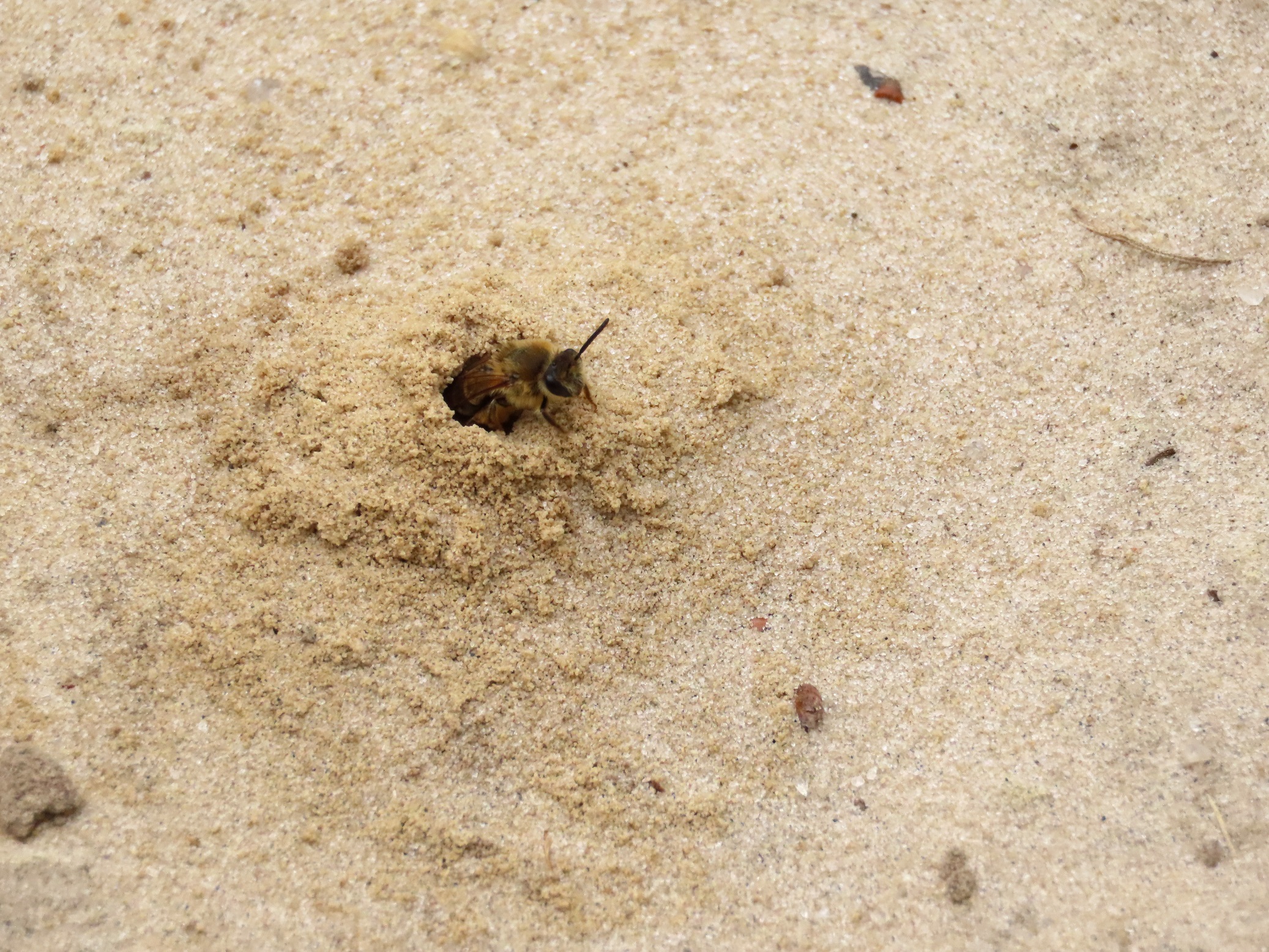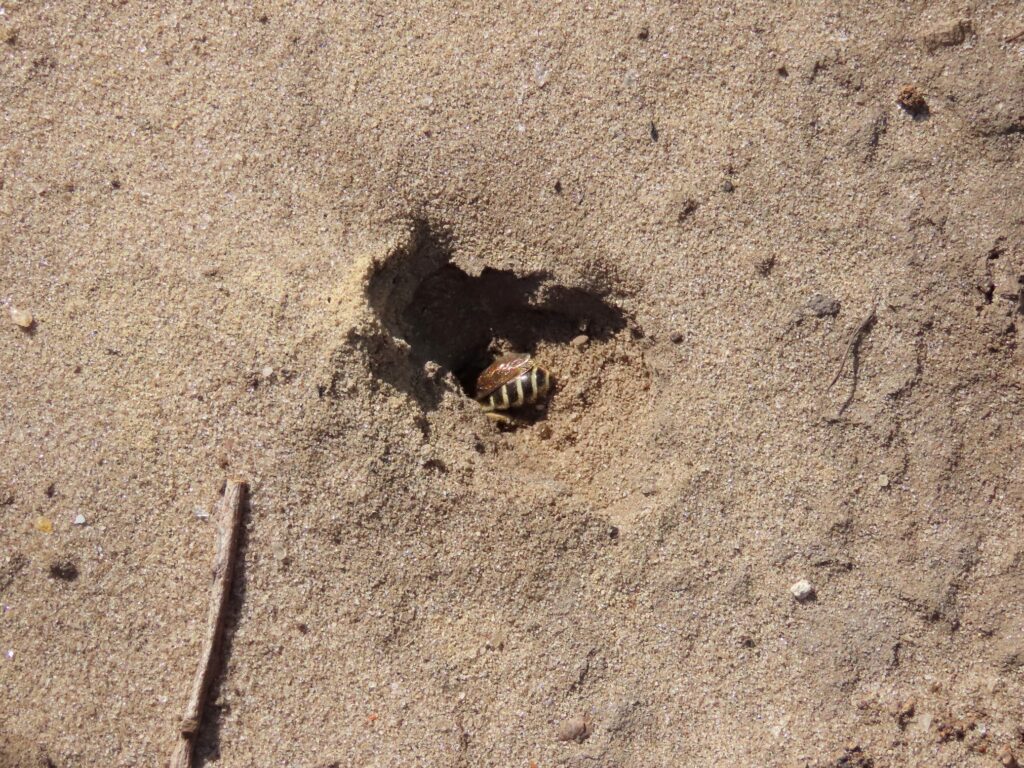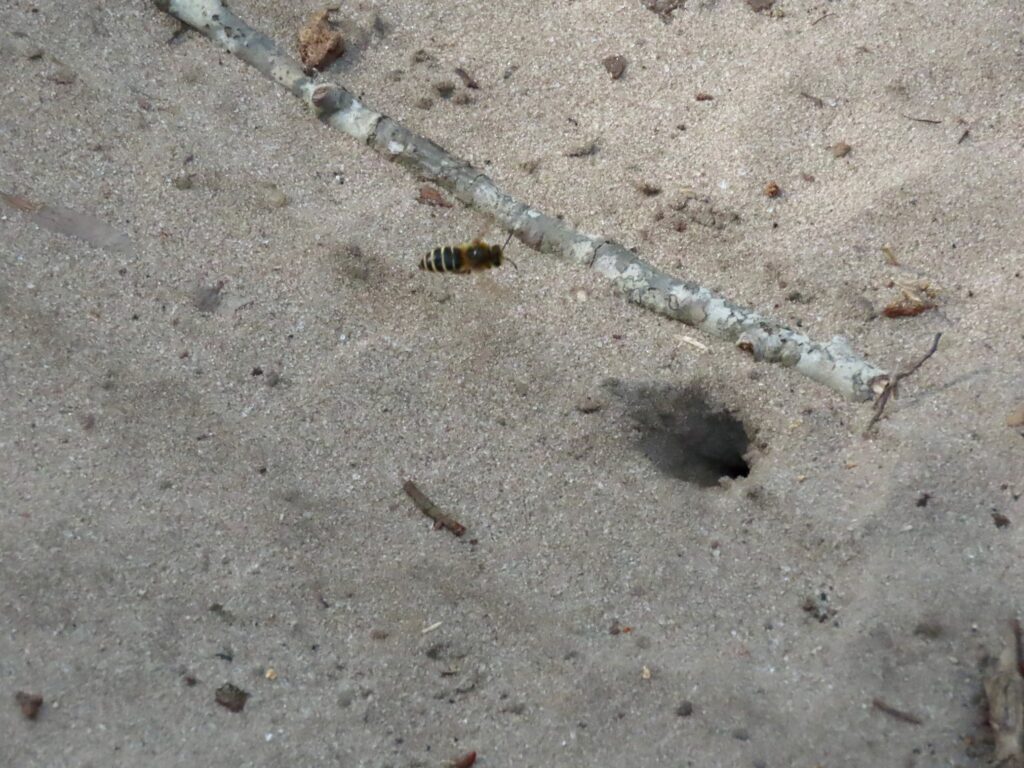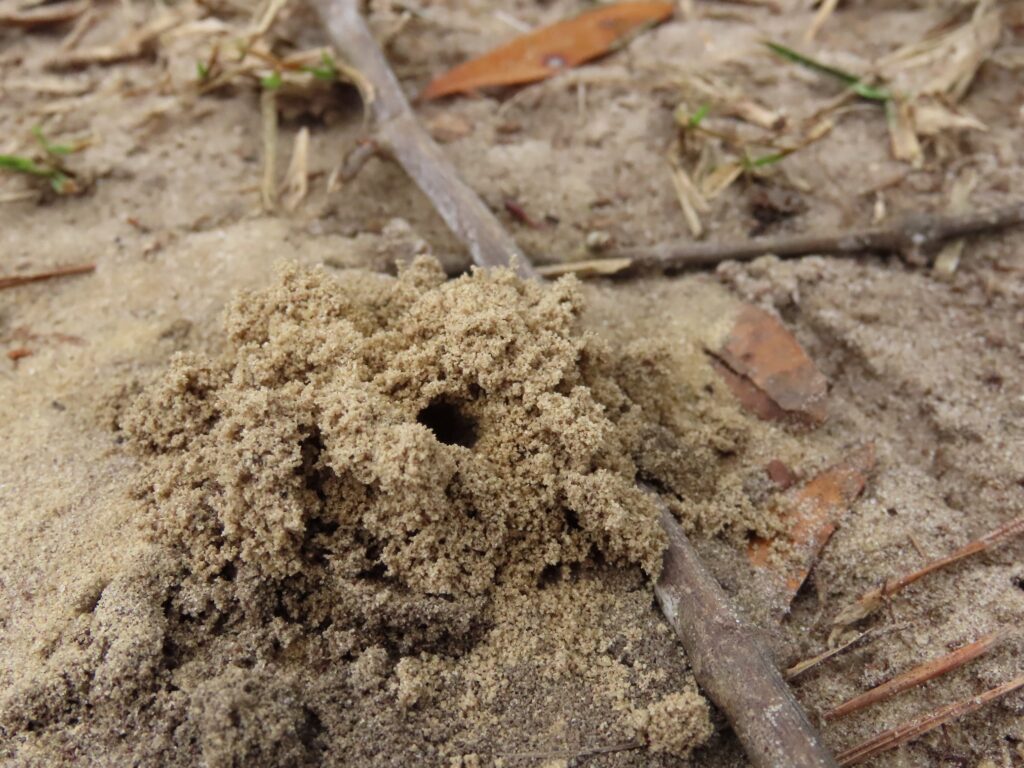



This week for Flora and Fauna Friday we have a band of burrowing bees, the Cellophane Bees (Colletes spp.).
In late winter miniature volcanos of fresh soil emerge from sandy barrens, trails, and driveways. Inch high hills of soft sand with pencil-thin holes puncturing their summits, dozens clustered together within arm’s reach. These are the telltale nest mounds of our Cellophane Bees. Here in the Lowcountry we have several species of Cellophane Bee. To me, the Unequal Cellophane Bee (C. inaequalis) appears to be our most common species around Edisto Island and the first to emerge here from late February well into March. Since all our Cellophane Bees are quite similar in appearance and ecology, I won’t get into interspecific nuances today. But generally, Cellophane Bees are similar in size and appearance to the Western Honey Bee (Apis mellifera) that we all know and love. Compared to Honey Bees, Cellophane Bees are a bit smaller, have more prominent antennae, and have a dark, abdomen wrapped in thin, contrasting bands of pale yellow.
As you would expect, Cellophane Bees are important pollinators. They travel from flower to flower collecting pollen and drinking nectar. They’re rather frenetic and hyper-active for bees, which makes them very efficient native pollinators. Some species are highly specialized to a certain family of flowering plants while others are more generalized. Unlike Honey Bees and Bumble Bees, Cellophane Bees are solitary ground-nesting bees. Each Bee digs its own burrow beneath the dirt to live in. The male’s burrow is nothing more than a bachelor’s pad for sleeping and escaping the elements. The female’s burrow is where she lays her eggs. Female Cellophane Bees will excavate a burrow in sandy soils several inches below the surface. She will often sit in the mouth of the burrow and guard it from rivals and predators. At the bottom of this burrow she’ll create a brood cell to cradle her eggs. The brood cell is lined in a thin film of a cellophane-like organic polymer produced by the female. This cling-wrapped cell is filled with a liquid slurry of nectar and pollen before an egg is laid within and the cell capped off. This “cellophane” bio-plastic allows the brood chamber at the bottom of the burrow to hold its shape in the sandy soil and is also waterproof, keeping the young from drying out and protecting the eggs and developing larvae from floods and rains. It’s also where Cellophane Bees get their common name. Each burrow contains one brood cell and the female will make several burrows each season. Although solitary, Cellophane Bees don’t mind neighbors and so you’ll often find dozens or hundreds of holes in a small patch of prime real estate.